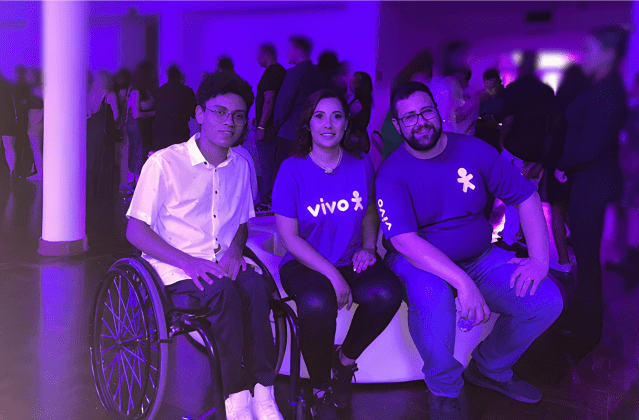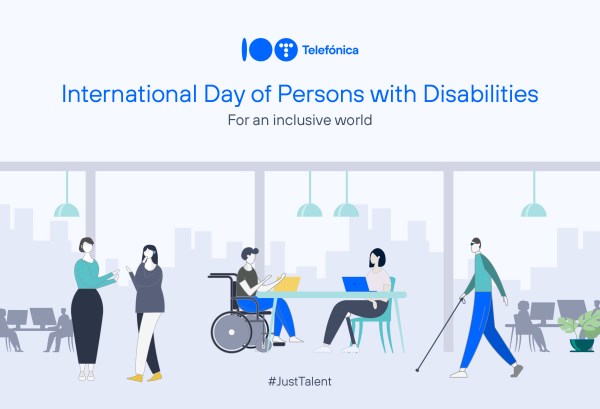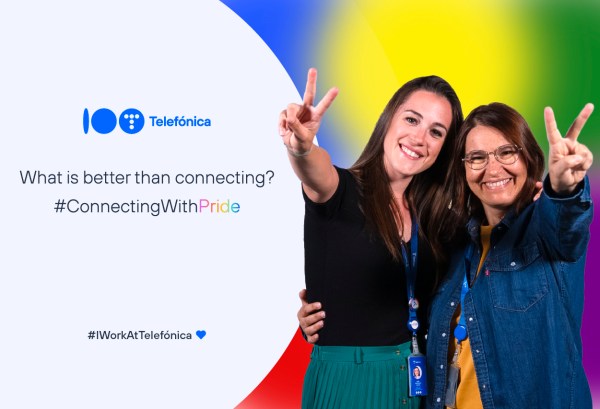Companies that are dedicated to hiring people with disabilities are taking an important step in the right direction, but the success of this initiative depends on much more than just recruitment policies. It is essential that employees are prepared to embrace diversity and work side by side with colleagues with functional diversity in a truly inclusive environment.

While diversity enriches the environment with a variety of individuals, inclusion ensures that everyone feels welcomed, appreciated and essential in the present. We yearn to be more than mere spectators; we yearn to immerse ourselves in storytelling, experience music, rhythm, and share happiness in community, while actively participating in the formation of a society that learns to build diverse relationships.
The road to an inclusive future
In reality, many organisations still face significant challenges in this regard. Preparing employees to interact and collaborate with colleagues with disabilities is often neglected, resulting in an environment that can be hostile and inaccessible. This not only undermines the effective inclusion of persons with disabilities, but also compromises their potential and that of the whole team.
Trainings and conferences are a good start, but they need to go beyond mere awareness raising. It is crucial that these initiatives are practical and focus on building real skills for living with differences. Employees must be able to understand and meet the needs of their colleagues with disabilities, knowing that everyone is responsible for promoting a work environment where everyone can thrive.
In practice, I have seen companies investing in technology and infrastructure to ensure that the workplace is accessible to all. This includes everything from assistive software to physical adaptations in the workspace, which requires a huge amount of company strategy and restructuring. In addition, technology is a great ally in this inclusion, providing tools that enable all employees to perform their roles effectively, however, it is an investment that needs to be driven with the support of attitudinal accessibility for all.
Types of accessibility
Attitudinal accessibility
This is the most accessible form of inclusion, as it depends solely on our initiative. It refers to individual commitment among peers, in deciding to overcome barriers that separate people with and without disabilities. It involves empathy in proactive actions to build a more equitable and welcoming environment for all.
Architectural accessibility
You may have noticed that lifts in metro stations, access ramps on buses or handrails on stairs are accessible. This refers to physical structures that facilitate the mobility of people with disabilities or reduced mobility, guaranteeing their autonomy in different environments.
Methodological accessibility
Persons with disabilities face various challenges in everyday life, including in education. Despite laws ensuring their access to education, barriers persist. Methodological or pedagogical accessibility encompasses the adaptation of methods and techniques to ensure the full educational inclusion of persons with disabilities.
Programmatic accessibility
There are several legislations that protect the rights of persons with disabilities, right? Programmatic accessibility relates to promoting awareness and implementation of these laws, regulations and public policies, ensuring that the needs of persons with disabilities are met.
Instrumental accessibility
The purpose of instrumental accessibility is to remove barriers in the operation of tools and devices essential for educational, professional, recreational and leisure activities. Examples include screen readers, alternative communication systems and adapters for writing instruments.
Accessibility in transport
The increasing independence of people with disabilities or limited mobility, seeking work, education or leisure, has driven the need for accessibility in transport. This demand goes beyond reserved seating to encompass the entire passenger journey, including wheelchair adapted turnstiles, tactile flooring and appropriate signage.
Accessibility in communications
Facilitating the understanding of communications for all is essential, as we are inherently social beings who express ourselves through speech, signs or gestures. Communication is fundamental to social and individual interaction. Resources such as pound-for-pound interpreters, virtual assistants and video captioning exemplify communicative accessibility.
Digital accessibility
With rapid technological development and increasing digital social interaction, digital accessibility has become a vital issue. However, studies indicate that less than 1% of websites are fully accessible to people with disabilities. The inclusion of alternative text in images and the use of high contrast on websites are some of the measures to promote digital accessibility.
Natural accessibility
The aim of natural accessibility is to overcome obstacles created by nature itself, such as dense vegetation, paths blocked by trees and uneven terrain. An example of such accessibility is the provision of amphibious wheelchairs on beaches, allowing people with physical disabilities to take advantage of natural environments.
The inclusion of people with disabilities in the labour market is not just a matter of meeting quotas or following regulations. It is an opportunity to enrich the work environment with different perspectives and skills and when well managed, diversity can drive innovation and creativity, as well as foster a more harmonious and productive organisational climate.
Key to a future of equality in the labour market
Deconstruct the biases you carry
For inclusion to succeed, we need to talk more about equity, but we also need a continuous commitment and a holistic approach. This means not only hiring PWD, but also creating an environment where they can truly belong and contribute. Effective inclusion requires a cultural change that values diversity in all its forms and promotes equal opportunities for all.
Companies that lead by example in inclusion and diversity not only improve their own operations, but also inspire other organisations to follow suit. By sharing their experiences and successful practices, they can help shape a more inclusive and diverse labour market for the future.
Where there is uncertainty it is essential to seek clarification. Implementing accessibility measures can seem challenging, and we often find ourselves not knowing where to start. The key to positive interaction and effective inclusion of persons with disabilities is direct communication, asking about their specific accessibility needs.
This is due to the fact that people with the same disability may require different accommodations. For example, one person with hearing loss may rely on lip-reading to understand the world around them, while another may rely exclusively on sign language and another less noisy environment for their hearing aid to capture the sound of the human voice clearly.
Therefore, no generalisations can be made; accessibility needs are as individual as the people themselves and in order to adopt an innovative lifestyle, it is important to understand the needs of each individual.
Change of mentality in Brazil
It is essential to cultivate renewed thinking. At this point it is crucial to recognise that Brazilian legislation, through the Law of Guidelines and Bases of National Education (Law no. 9.394/96), has made great strides in ensuring the right of access to education for students with disabilities.
This law seeks to promote equal opportunities, allowing these students to have the same opportunities for socialisation, cognitive development and acquisition of socio-emotional competences as their non-disabled peers. Inclusion is a right that is guaranteed by law, direct consultation with persons with disabilities is a fundamental step to establish it properly and openness of all is essential to achieve it.
Business success
In short, inclusion and diversity at work are more than internal policies; they are the basis for a dynamic and innovative business environment. By properly preparing employees and investing in accessibility, companies can not only meet the needs of employees with disabilities, but also unlock the potential of their entire workforce.
This investment is a win-win: employees feel valued and motivated, companies benefit from a wider variety of perspectives and innovative ideas, and society as a whole moves forward when diversity is celebrated and inclusion is practised. Undoubtedly a key to long-term sustainable growth and success.








